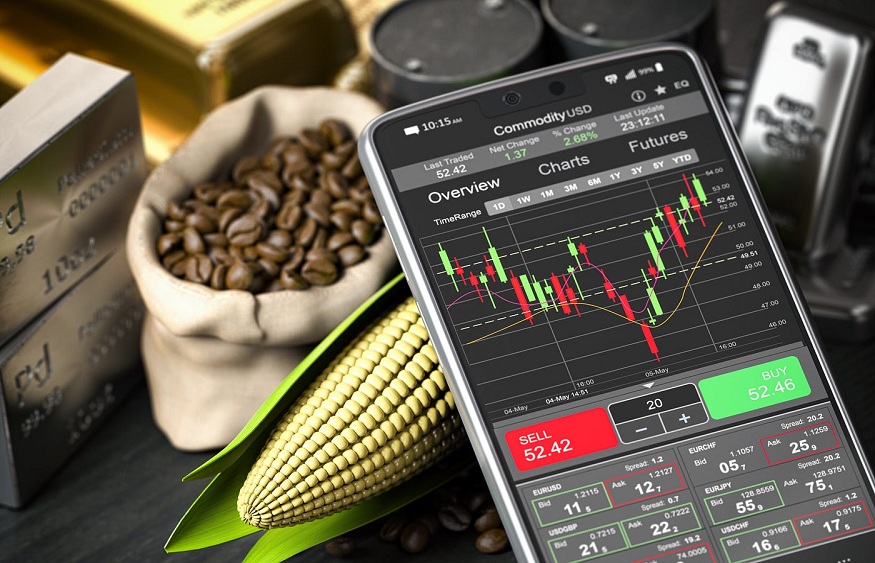In the fast-paced and intricate world of commodity markets traders rely on a combination of fundamental and technical analysis to make informed decisions. In this comprehensive guide, we will explore the significance of market liquidity in commodity trading and its impact on traders’ strategies. We will first define market liquidity and discuss its importance for commodity traders. Understanding market liquidity is essential for navigating the complexities of commodity markets effectively.Market liquidity refers to the ease with which a commodity research can be bought or sold without significantly affecting its price. For commodity traders, liquidity plays a pivotal role in executing trades swiftly and at favourable prices. It ensures that traders can enter or exit positions without substantial slippage or market impact. The importance of market liquidity lies in the benefits it offers to traders. In liquid markets, traders can achieve improved execution, reduced transaction costs, and narrower bid-ask spreads. Moreover, enhanced market depth and stability provide a conducive trading environment, allowing traders to manage larger positions with confidence.Conversely, trading in illiquid markets poses challenges, such as limited trading opportunities and increased price volatility. Illiquid markets can also make executing large orders difficult, potentially resulting in unfavourable prices for traders.
Understanding Market Liquidity:
Market liquidity refers to the ease with which a commodity research can be bought or sold without significantly affecting its price. It is a crucial aspect of commodity trading as it directly influences execution speed and transaction costs. Various factors, such as trading volume, bid-ask spreads, and market depth, play a role in determining the liquidity of commodity markets. Traders must distinguish between liquid commodities that offer ample trading opportunities and illiquid commodities that present challenges in execution.
Benefits of Trading in Liquid Markets:
Trading in liquid markets bestows numerous advantages upon commodity traders. Firstly, it enables traders to experience improved execution, resulting in reduced slippage and ensuring that their orders are filled at desired prices without significant deviation. This enhanced execution efficiency is vital for capturing favourable entry and exit points in trades. Secondly, liquid markets offer the benefit of lower transaction costs and narrower bid-ask spreads, enhancing traders’ overall profitability. The reduced cost of trading allows traders to retain more of their gains from successful trades. Furthermore, liquid markets exhibit enhanced market depth and stability, providing a conducive environment for traders to execute larger positions with minimal impact on market prices. This characteristic is particularly advantageous when trading substantial volumes, as it allows traders to navigate the market with ease and without causing significant price fluctuations. In conclusion, trading in liquid markets grants commodity traders a competitive edge, enabling them to execute their trading strategies more effectively, capitalise on profitable opportunities, and ultimately achieve more successful outcomes.
Challenges of Trading in Illiquid Markets:
However, engaging in trading within illiquid markets poses distinctive challenges for commodity traders. Firstly, limited trading opportunities and the presence of price manipulation risks can impede traders’ seamless entry and exit from positions. This scarcity of trading activity may restrict traders from executing trades promptly, potentially leading to missed opportunities or delayed exits. Secondly, illiquid markets frequently witness higher price volatility and unpredictable price movements, making it arduous for traders to accurately forecast price trends. The inherent uncertainty in price movements can introduce additional risks and hinder traders’ ability to make well-informed decisions. Moreover, when attempting to execute large orders in illiquid markets, traders may encounter significant price fluctuations that result in unfavourable execution prices. The lack of sufficient market depth and liquidity can expose traders to slippage and increased transaction costs. In conclusion, navigating the challenges of illiquid markets demands adept risk management strategies and a thorough understanding of market dynamics to safeguard against potential adverse outcomes.
The Role of Technology in Enhancing Liquidity:
The advent of Technologynos has revolutionised commodity trading, particularly in liquid markets. Electronic trading platforms have significantly improved market liquidity by increasing trading efficiency and accessibility. Algorithmic trading, powered by advanced algorithms, has further enhanced liquidity by providing continuous price quotes and increased trading activity.
Benefits and Challenges in the Indian Commodity Market:
In the context of the Indian commodity market, traders encounter a mix of promising prospects and challenges. The market’s immense potential and diverse range of offerings make it an enticing destination for traders worldwide. However, navigating the intricacies of the Indian commodity market demands a comprehensive understanding of its unique dynamics. Factors such as cultural influences, government policies, and regional demand patterns can significantly impact commodity prices and trading opportunities. Traders must also be aware of specific supply chain logistics and seasonal variations that affect various commodities in this market. While the Indian commodity market opens doors to lucrative ventures, it requires a well-informed and adaptable approach to capitalise on its potential fully. Traders who invest time in researching and understanding the complexities of the Indian commodity market are better positioned to make strategic decisions and optimise their trading outcomes.
Regulatory Considerations and Market Liquidity:
Regulators play a critical role in maintaining market integrity and liquidity. By implementing appropriate regulations, they aim to foster a fair and transparent trading environment. However, certain regulatory challenges may arise, affecting liquidity and traders’ strategies.
Market liquidity is a crucial factor in commodity trading that impacts traders’ ability to execute their strategies successfully. Understanding the benefits and challenges of trading in liquid and illiquid markets is vital for developing effective trading approaches. Emphasising the role of liquidity in gaining a trader’s edge, traders must leverage market liquidity effectively to seize opportunities and manage risks. By combining fundamental and technical analysis with an understanding of market liquidity, traders can make well-informed decisions and navigate the dynamic world of commodity trading with confidence. Utilising commodities trading apps can further enhance trading efficiency, enabling traders to stay ahead in this competitive market landscape.










